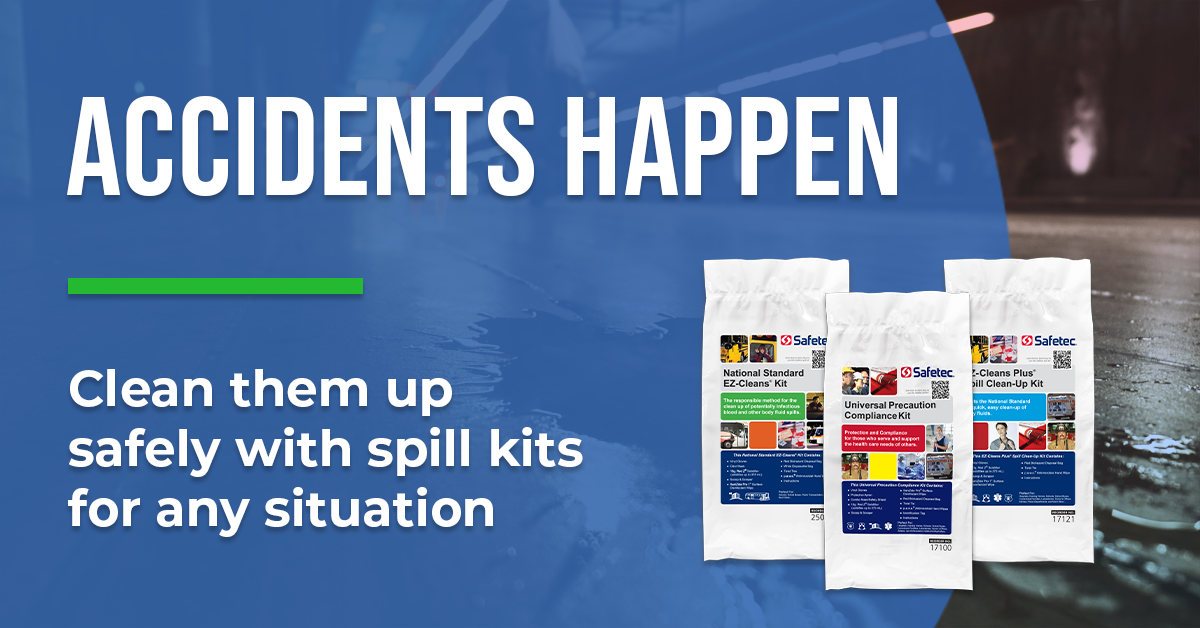
Common Bloodborne Pathogen Misconceptions
Bloodborne pathogens are infectious microorganisms in human blood and other body fluids that can cause disease in humans. These pathogens include, but are not limited to, hepatitis B (HBV), hepatitis C (HCV), and human immunodeficiency virus (HIV).
Bloodborne pathogens spread when blood or bodily fluids from an infected person enter another individual’s body. There are four main methods of contracting bloodborne pathogens: direct contact, indirect contact, respiratory droplet transmission, or vector-borne transmission.
Exposures to blood and other body fluids occur across a wide variety of occupations and industries as accidents can happen anywhere. Misconceptions of bloodborne pathogens can be dangerous to your health. That’s why we decided to bust the most common myths and set the record straight.
Myth: Bloodborne pathogens are only found in the blood.
Many people may mistakenly believe they are safe from bloodborne pathogens if there is no blood visibly present. However, bloodborne pathogens can still live on a surface in other bodily fluids containing hidden blood. Unfortunately, bodily fluids can be just as infectious as visible blood. Other potentially infectious body fluids include, but are not limited to, cerebrospinal fluid, amniotic fluid, saliva, and any other body fluid visibly contaminated with blood.
Myth: Dried blood is no longer infectious.
Even dried blood can be dangerous as some bloodborne viruses can live and remain infectious for hours or days outside the body. For example, the Hepatitis B virus can live in dried blood for up to a week, and Hepatitis C can survive for up to four days.
Myth: You do not need to take precautions if the person appears healthy.
Theoretically, this is true. However, it is impossible to know for sure that a person is not carrying bloodborne pathogens unless you test their blood first. A seemingly healthy individual could be carrying a dangerous virus and show no symptoms. That is why the universal precaution method is to treat all blood and body fluids as infectious.
Myth: If you are wearing gloves, you do not need to wash your hands after cleaning up bodily fluids.
Many people believe gloves will protect the body from contamination. Gloves can often contain tiny pinholes that are not discernible to the human eye, so they could easily transfer bloodborne pathogens onto your skin. For this reason, you must thoroughly scrub your hands with both soap and water once you have removed the gloves or other clothing.
Antiseptic hand cleansers or antiseptic towelettes are examples of acceptable alternatives to running water. However, when alternate options are used, employees must wash their hands with soap and running water as soon as possible.
The Takeaway
There are many regulations in place to follow when handling blood or other potentially infectious bodily fluids. Never pick up contaminated materials by hand (even with gloves on), wash your hands after removing gloves, and always approach fresh and dried blood with extreme caution.
Made in America, for America
As hard as we try to prevent accidents, they can happen anywhere. No one understands the importance of workplace safety and preparedness more than us! That’s why Safetec of America makes preparedness easy with a cost-saving and convenient approach to protection with pre-packaged kits designed to help keep facilities in OSHA Standard Compliance (29 CFR 1910.1030 – Bloodborne Pathogens).

Why Safetec of America?
For over 30 years, Safetec has been a leading manufacturer of first aid, infection control, and over-the-counter products. Located in Buffalo, N.Y., all our products are manufactured and distributed by us in our state-of-the-art FDA regulated facilities.
We first entered the infection control industry with Red Z®, our flagship product, to aid in protecting against infection during the AIDS epidemic. Since then, we have expanded our manufacturing capabilities and offer five product lines of various products.
Sources:
https://www.bccdc.ca/health-info/disease-types/bloodborne-diseases
https://www.osha.gov/laws-regs/standardinterpretations/1993-02-01-0
